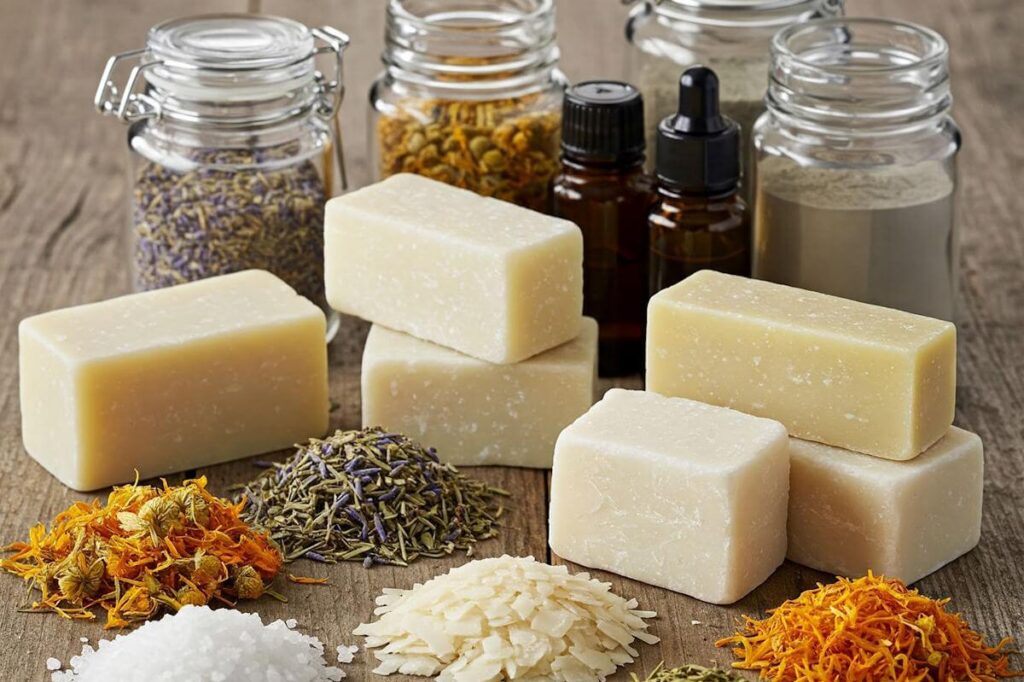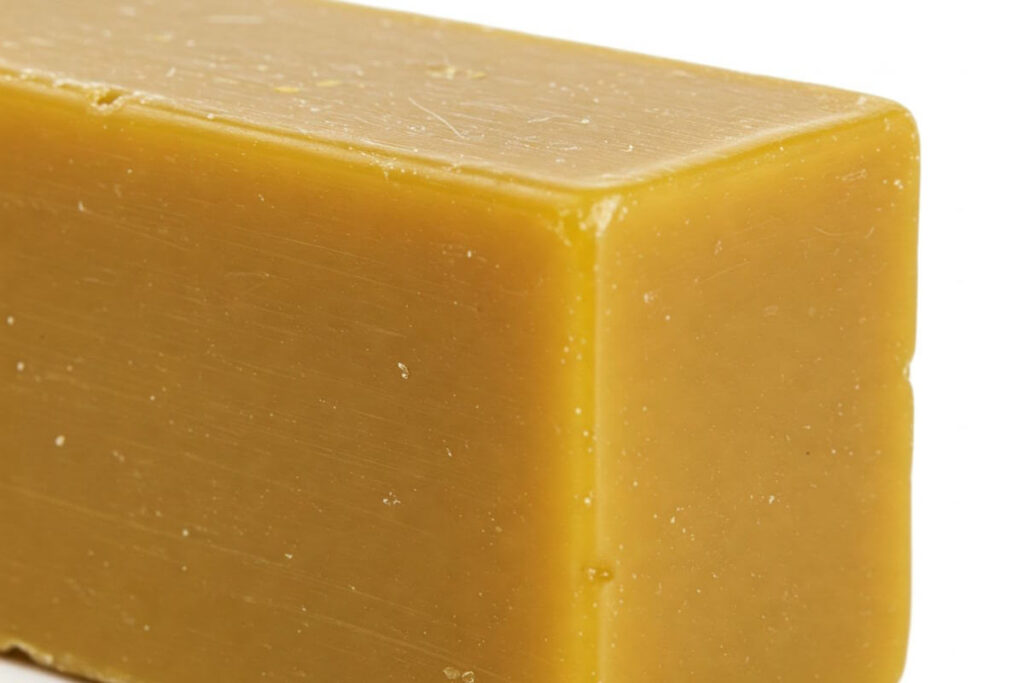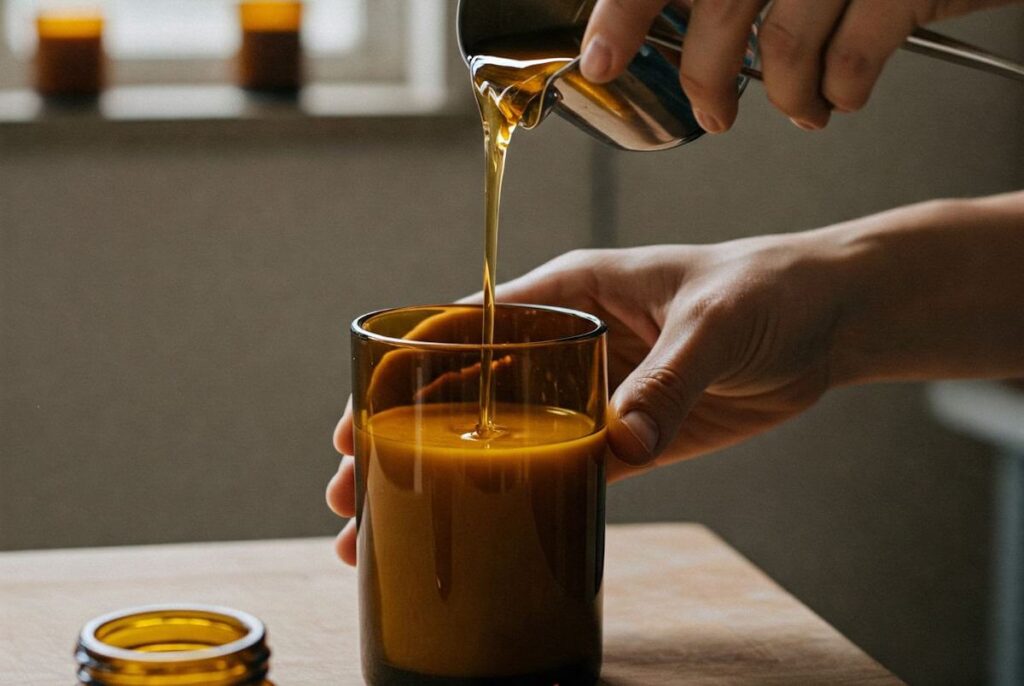The art of handmade soap making has gained significant traction in recent years, reflecting a broader trend towards artisanal and handcrafted products. As consumers become more mindful of the ingredients in their personal care items, many are turning to handmade soaps as a healthier alternative to commercial options often laden with synthetic additives. This shift highlights a growing appreciation for the transparency in ingredient sourcing and the customization that accompanies crafting one’s own soap.
One of the primary benefits of using handmade soaps is their potential to enhance skin health. Many commercial soaps contain harsh chemicals and preservatives, which can disrupt the skin’s natural barrier and lead to irritation. In contrast, handmade soaps are typically formulated with natural ingredients, allowing for a gentler, more nourishing cleansing experience. Additionally, the ability to select specific ingredients tailored to personal skin types and preferences affords users a unique opportunity to address individual skincare needs.
Beyond the tangible health benefits, the process of creating handmade soap can be a deeply gratifying experience. Engaging in soap making allows individuals to express their creativity by experimenting with different scents, colors, and shapes. This process not only delivers a product that reflects personal taste but also imbues each bar with a sense of individuality and care. The satisfaction derived from crafting a unique soap bar can elevate the experience from mere consumption to a cherished hobby.
As we explore the essential ingredients required for high-quality handmade soap, it is crucial to understand how these components work in harmony to produce a luxurious product. Selecting the right ingredients is not merely a technical step; it is an integral part of achieving a soap that is both aesthetically pleasing and effective in its purpose. The impending sections will delve into these key ingredients, emphasizing their role in the artisanal soap-making journey.
Understanding the Importance of Quality Ingredients
The selection of ingredients in handmade soap is pivotal to the overall quality and performance of the final product. High-quality ingredients play a critical role in determining attributes such as texture, scent, lather ability, and various skin benefits. When making soap, the focus on premium components ensures that the resulting bar not only meets aesthetic standards but also provides beneficial properties for the skin.
One of the primary distinctions in soap making is the choice between natural and synthetic ingredients. Natural ingredients, derived from plants, oils, and botanicals, tend to offer better moisturizing properties, promote healthier skin, and minimize the risk of irritation compared to their synthetic counterparts. For instance, utilizing high-quality oils such as coconut, olive, or avocado enhances the soap’s ability to nourish the skin, resulting in a moisturizing experience that synthetic soaps often lack.
The effectiveness of any handmade soap hinges on the quality of its ingredients. The interaction between distinct oils and additives is crucial; for example, the lather produced by a soap relies on the quality and type of fats used. High-quality fats contribute to a rich, creamy lather, which significantly heightens the user experience. In addition, essential oils play a crucial role in imparting natural scents that are pleasing to the senses, while also offering aromatherapeutic benefits.
Furthermore, the sourcing of ingredients not only impacts the soap’s efficacy but also aligns with ethical considerations. Choosing sustainably sourced and organic ingredients can appeal to conscientious consumers, thereby enhancing the marketability of the soap. Thus, understanding the importance of quality ingredients in soap making cannot be overstated, as these choices fundamentally shape the properties and appeal of the finished product.
Essential Ingredient 1: Oils and Fats
Oils and fats are integral components in the production of high-quality handmade soap, as they play a crucial role in determining the properties of the final product. Different types of oils bring unique characteristics that influence the soap’s hardness, lather, and moisturizing properties. Among the most commonly used oils are olive oil, coconut oil, and palm oil, each with distinct benefits.
Olive oil is renowned for its exceptional moisturizing qualities. It produces a mild and gentle soap that is particularly suitable for sensitive skin. The high content of oleic acid in olive oil contributes to a smooth and creamy lather, although it may not create as much bubbles compared to other oils. Therefore, it is often used in conjunction with other oils to achieve a desired balance.
Coconut oil, on the other hand, is celebrated for the lather it produces. It generates a bubbly and cleansing soap, ideal for removing dirt and oils, making it perfect for commercial use or for those who prefer a refreshing wash. However, coconut oil can be quite drying when used in excess, so it is essential to find the right ratio when formulating recipes. Typically, a blend of coconut oil with more moisturizing oils helps mitigate this drying effect.
Palm oil is another common choice due to its ability to create a firm soap bar while contributing to a stable lather. It enhances the hardness of the soap, ensuring that bars last longer with proper storage. However, ethical considerations regarding palm oil production have led some soap makers to seek alternatives or certified sustainable palm oil to minimize environmental impact.
The ratio of these oils can significantly affect the overall characteristics of the soap. For instance, a higher concentration of hard oils will yield a firmer soap, while a balance between solid and liquid oils can achieve a softer, creamier texture. Understanding the intricacies of oils and fats is fundamental for crafting exceptional handmade soap.
Essential Ingredient 2: Lye (Sodium Hydroxide)
Lye, chemically known as sodium hydroxide, is a crucial ingredient in the soap-making process. Its principal role is to initiate saponification, a chemical reaction that occurs when lye is mixed with oils or fats. During this reaction, the lye breaks down the fatty acids in the oils, ultimately transforming them into soap and generating glycerin as a byproduct. This reaction is vital for producing high-quality handmade soap that is both effective and pleasing to use.
Despite widespread misconceptions, lye is not an additive that can be omitted; it is essential for the soap-making process. Many individuals associate lye with danger due to its caustic nature, but when carefully measured and correctly handled, it is safe and effective for soap production. It is imperative for soap makers to follow strict safety protocols when working with lye. This includes wearing personal protective equipment such as gloves and goggles, working in a well-ventilated area, and understanding proper storage methods to avoid accidents.
Moreover, the quality of the lye used can directly affect the final product. Using pure sodium hydroxide ensures a successful saponification process; impurities or variations in the chemical composition can lead to inconsistent results or even an inferior soap product. It’s also important for soap makers to understand that the lye must fully react with the oils during the saponification process. Any residual lye left in the finished soap can pose risks to the skin, leading to irritation or burns.
In summary, lye is not just a mere ingredient but the backbone of the soap-making process. Its proper use and understanding is essential for creating high-quality handmade soap that is safe and enjoyable for all users.
Essential Ingredient 3: Water or Other Liquids
Water or other liquids play a pivotal role in the soap-making process, acting as a solvent for lye and facilitating the saponification reaction. The choice of liquid not only impacts the chemical makeup of the soap but also influences its overall quality and sensory experience. While water is the most commonly used liquid, alternatives such as herbal infusions, milk, or even fruit juices can impart unique characteristics to the soap.
When utilizing water, it is crucial to maintain the correct ratio of liquid to lye. A typical guideline is a ratio of 2:1, meaning two parts water to one part lye. However, the use of other liquids necessitates adjustments, as various liquids contain different amounts of water. For instance, when using milk or herbal infusions, one must calculate their water content to maintain an appropriate balance in the mixture. Failing to do so can result in inconsistent saponification, potentially compromising the soap’s texture and overall quality.
Incorporating liquids such as aloe vera juice or herbal teas can enhance the soap’s properties, providing additional benefits such as moisturizing capabilities or aromatherapy effects. For example, goat’s milk can contribute to a creamier texture and provide nourishing properties that are beneficial for the skin, while green tea might offer antioxidants. The sensory experience is also enhanced by these liquids, as they can impart subtle fragrances and colors, making the soap not only functional but appealing to the senses.
Ultimately, the choice and proportion of liquids in handmade soap can significantly affect the final product. Experimentation with various blends can lead to unique soaps that elevate the user’s bathing experience, showcasing the versatility and creativity that can be achieved in handcrafted soap making.
Natural Additives and Botanicals in Soap-Making
In the realm of handmade soap-making, the incorporation of natural additives and botanicals plays a pivotal role in enhancing not only the aesthetic appeal of the soap but also its functional benefits. Such ingredients include clays, herbs, essential oils, and exfoliants, each contributing unique properties and sensory experiences. For instance, clays like bentonite or kaolin can impart a pleasing texture and natural color to the soap while offering gentle cleansing properties. These materials are often chosen for their absorbent qualities, making them suitable for a variety of skin types.
Herbs and botanicals also contribute significantly, as they can provide beneficial nutrients to the skin. Ingredients like chamomile or calendula can soothe irritation and promote healing, while peppermint and eucalyptus can invigorate the senses, imparting a refreshing aroma. Essential oils, extracted from various plants, are particularly valued for their fragrant qualities and therapeutic benefits. Selecting high-quality essential oils can transform a basic bar of soap into a luxurious experience, therefore enhancing its overall appeal.
When incorporating these natural additives, it is essential to understand their potency and the recommended usage rates. Overuse of certain botanicals or essential oils can lead to skin irritation, so adhering to guidelines and testing small batches is advised. Additionally, considering the compatibility of each ingredient with your primary fats and oils will ensure a well-balanced soap that performs effectively. For those new to the craft, starting with added infusions or reputable suppliers can yield satisfactory results.
These practices not only allow for customization but also enable artisans to create unique products that resonate with consumers looking for sustainable and skin-friendly alternatives. By thoughtfully selecting and incorporating natural additives and botanicals, soap makers can elevate their creations while prioritizing user experience and skin health.
Fragrance and Essential Oils
When it comes to handmade soap, the choice of fragrance plays a pivotal role in determining the product’s appeal and usability. There are two primary options available for scenting soap: synthetic fragrances and natural essential oils. Each category has its own unique characteristics, benefits, and drawbacks that artisans must consider when formulating their soaps.
Synthetic fragrances are man-made and designed to mimic natural scents or create new, novel aromas that do not exist in nature. One of the major advantages of synthetic fragrances is their potency and longevity; they can provide a stronger scent that often lasts much longer in the final product. However, these fragrances may contain artificial compounds that could potentially irritate sensitive skin. Therefore, individuals creating handmade soaps should conduct thorough research to ensure these fragrances are skin-safe and suitable for their target audience.
On the other hand, natural essential oils are extracted from plants and offer a myriad of benefits, including potential therapeutic properties. Many soap makers prefer essential oils for their holistic qualities, such as calming lavender or uplifting citrus scents. However, essential oils typically have a lower strength and can diminish in scent over time when exposed to heat or light, which presents a challenge in achieving long-lasting fragrances. Additionally, some essential oils can trigger allergies or irritation if not properly diluted.
When selecting scents for handmade soap, it’s vital to consider personal preference, skin sensitivities, and the intended use of the product. Carefully blending several fragrances or essential oils can create a unique blend that caters to various customer needs. Ultimately, understanding the differences between synthetic fragrances and natural essential oils will help creators make informed choices that enhance their handmade soap’s quality and appeal, ensuring a delightful sensory experience for users.
Tips for Sourcing Quality Ingredients
When embarking on the journey of creating high-quality handmade soap, sourcing the right ingredients is paramount. The first step is to identify reputable suppliers who are known for their quality products and ethical practices. It is advisable to seek out suppliers that specialize in soap-making materials, as they often provide a wide range of high-quality oils, butters, and additives tailored for this craft.
In addition to using specialized suppliers, it is crucial to meticulously read the labels of the ingredients you consider purchasing. Look for items that list their contents clearly and avoid products that contain synthetic additives or harmful chemicals. Ingredients labeled as organic or natural are typically more desirable, as they tend to be less processed and more beneficial for the skin. Understanding the various types of oils and their properties can also assist you in making more informed purchasing decisions.
Sustainability and ethical sourcing should be central to your ingredient sourcing strategy. Prioritize suppliers that demonstrate a commitment to sustainable practices, such as fair trade sourcing or eco-friendly packaging. This not only contributes positively to the environment but also ensures that your handmade soaps have a smaller ecological footprint.
Finally, consider the benefits of local versus online shopping when sourcing your ingredients. Local suppliers can offer fresh products and the opportunity to build relationships in the crafting community, while online shopping provides convenience and access to a broader range of ingredients. Keep in mind that purchasing locally supports small businesses and often allows for easier transport of materials.
By carefully selecting your suppliers and understanding the quality of the ingredients, you will pave the way for creating exceptional handmade soap that resonates with consumers.
Conclusion: Crafting Your Perfect Handmade Soap
In the realm of handmade soap making, the journey begins with understanding and utilizing essential ingredients. Each component plays a pivotal role in not only ensuring the quality of the soap but also enhancing its appeal and functionality. As discussed throughout this post, oils, lye, fragrance, colorants, and additives contribute uniquely to the overall outcome. The careful selection of these elements enables soap makers to tailor their creations to meet specific skin care needs and aesthetic preferences.
Experimentation remains the cornerstone of crafting high-quality handmade soap. By combining various oils, one can achieve unique moisturizing properties, while incorporating different additives may enhance the soap’s texture or therapeutic benefits. Additionally, fragrance oils can evoke pleasant aromas that transform an everyday wash into a sensory experience. Engaging with these ingredients allows for a personalized touch, encouraging creativity and individual expression. The immense variety of herbs, essential oils, and natural colorants available provides an ample palette for one’s imagination.
Beyond the technical aspects of ingredient selection, the act of making soap often provides a sense of achievement and satisfaction. The process can be therapeutic, presenting an opportunity for creators to connect with their products on a deeper level. Each bar of soap becomes not just a cleansing product but a piece infused with care and creativity. As you embark on this rewarding venture of crafting your handmade soap, remember that the joy lies in the experimentation and discovery of what works best for you. Embrace the nuances of each ingredient and revel in the art of homemade craftsmanship, knowing that your personal touch makes every bar unique.




